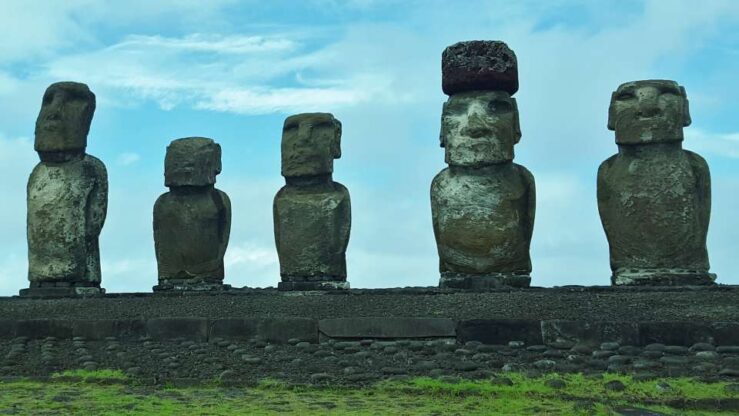Skagway Train Tour: White Pass & Yukon Route Railway – The Klondike Gold Rush
1. Klondike Gold Rush
2. Skagway White Pass Train (Yukon Route Railway)
3. Skagway Town
Today, Skagway is a charming town, but around the turn of the century, it was a primitive stampeders town. It was the last stop before the perilous trail and journey towards the Klondike River and region, where the Alaskan gold rush raged towards the end of the 1800s.
An excellent way to visit Skagway and follow in the footsteps of the old gold rush pioneers is on an Alaska cruise from Anchorage. Skagway is a popular ‘cruise port’ and is often part of the itinerary between Anchorage and Vancouver. From Skagway, visitors can hop on the White Pass Train on the Yukon Route Railway tour to explore the itinerary of the hopeful gold diggers of the time.
In 1887, Captain William Moore settled in Skagway. The gold fever indeed had hit Skagway Valley (only inhabited by the Tlingit natives) in a log cabin (‘The Moore Homestead’ still exists!). Foreseeing that the place would become a prosperous location as the access point to gold fields up the mountains, he initiated the construction of a wharf, a sawmill, and the White Pass Trail.
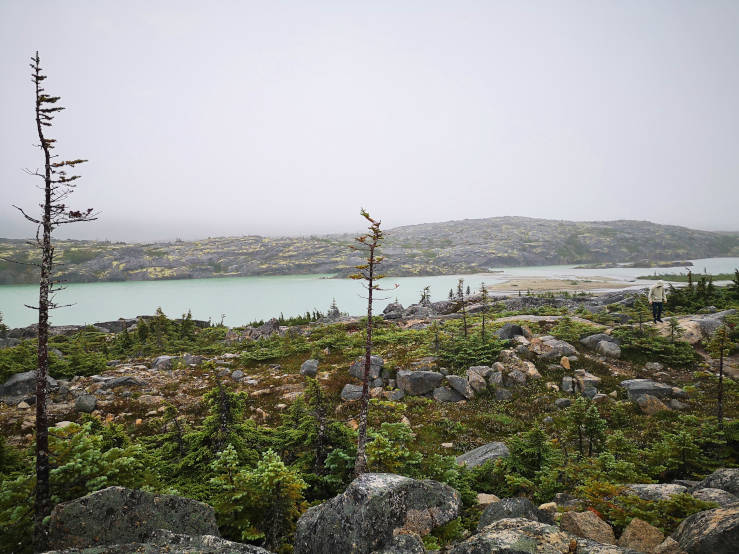
The White Pass Trail | Photo: Travel In Culture
In 1896, gold was found at the Klondike River in the Yukon Territory (Canada)! This was indeed breaking news! Rumours spread quickly, and the gold rush really took off within a year! Gold seekers flocked to Seattle, from where they boarded a ship to the Alaskan port towns. The stampeders included a considerable number of unemployed people from as far away as New York after the Panic of 1893, which was the economic depression in the United States, all having in common that they saw the chance to become rich in gold. However, out of 100,000 caught by the gold fever, only 3,000 made it, and only a few percent could leave with more money than they had brought!
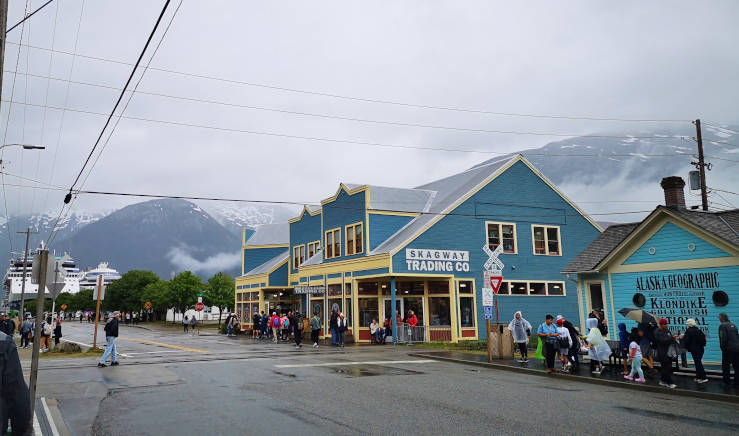
Klondike gold rush history | Photo: Travel In Culture
There were several possible ways to reach the gold fields. Two of the most obvious treks were The White Pass and Chilkoot Trails, from Skagway and Dyea, respectively. Many people headed towards Klondike arrived at Skagway and Dyea.
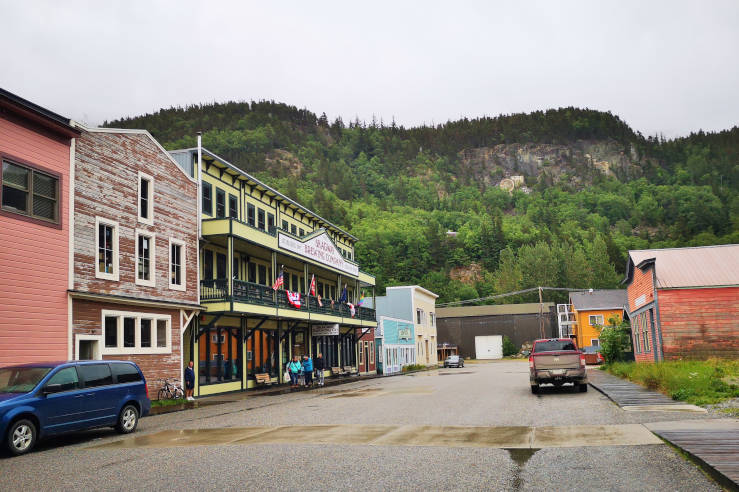
Photo: Travel In Culture
Skagway soon expanded from a modest place to a full-scale, vibrant gold rush town with shops, bars, brothels, electricity, running water, telephone connection, and hopeful newcomers who wanted to be part of the Klondike Gold Rush. There was a jumble of tents on the Skagway beaches – gold fever had indeed hit Skagway!
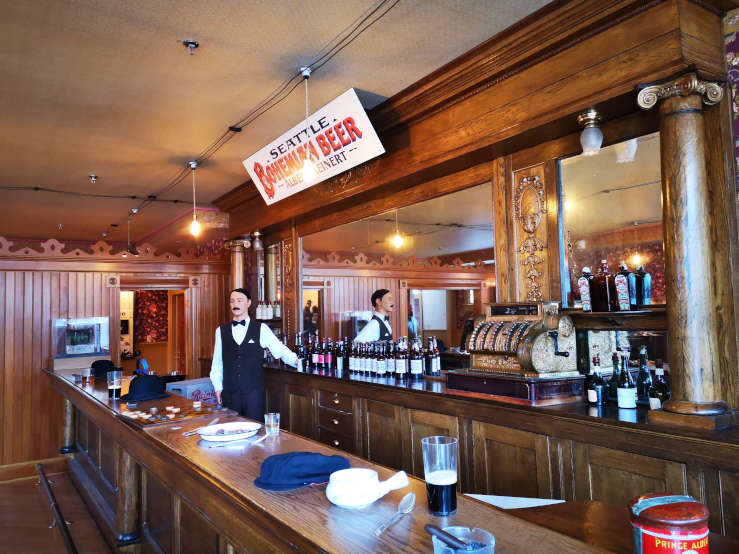
Gold rush bar for Klondike gold miners | Photo: Travel In Culture
Life was not easy for the gold-rush people as they were challenged not only by the harsh life fighting their way towards the Klondike gold fields but also by disease, lack of food, risk of death, climate and extreme winter conditions – it was icy cold! The climate changed from temperate rainforest to arctic tundra on the top. Although the journey was already harsh for the men, it was disastrous for the pack animals – a qualified estimate is that over 3,000 horses lost their lives. It is not without reason that there is a location along the route named ‘Dead Horse Gulch’ or ‘Dead Horse Trail’, and today, the remains of bones tell the tragic story.
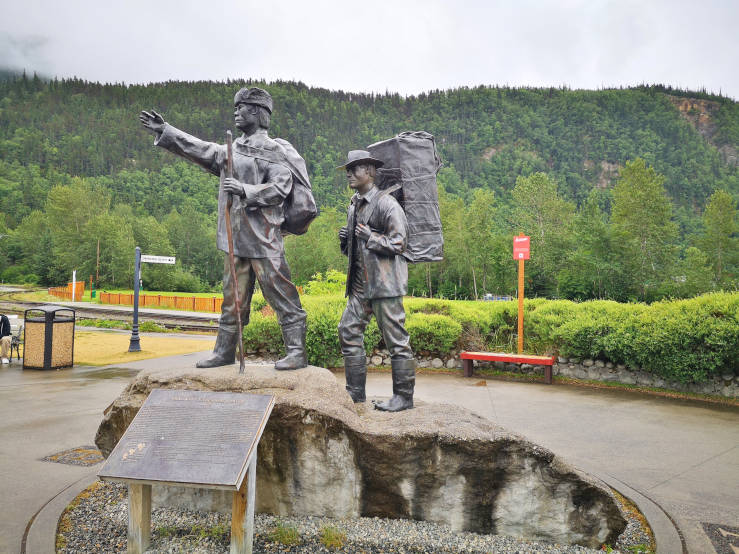
Skagway Centennial Statue 1897 | Photo: Travel In Culture
The Chilkoot Trail is said to have been the toughest for the stampeders until a tramway was built around 1898 since it was generally too steep to use pack animals. This meant that until 1898, the men would have to carry all supplies on their backs. This comprised hundreds of kilos of food in addition to the equipment required by the Canadian authorities to enter Yukon for gold panning.
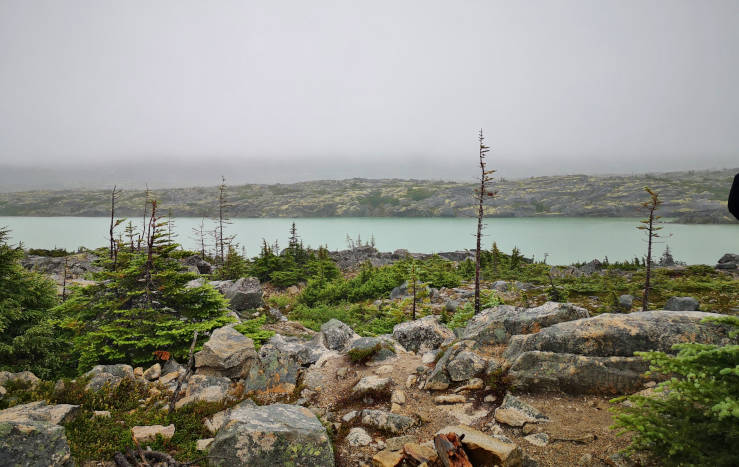
Photo: Travel In Culture
People had to walk 30-50 times the distance to transport all supplies, which took about a year. The work included building boats or rafts to cross Bennett Lake.
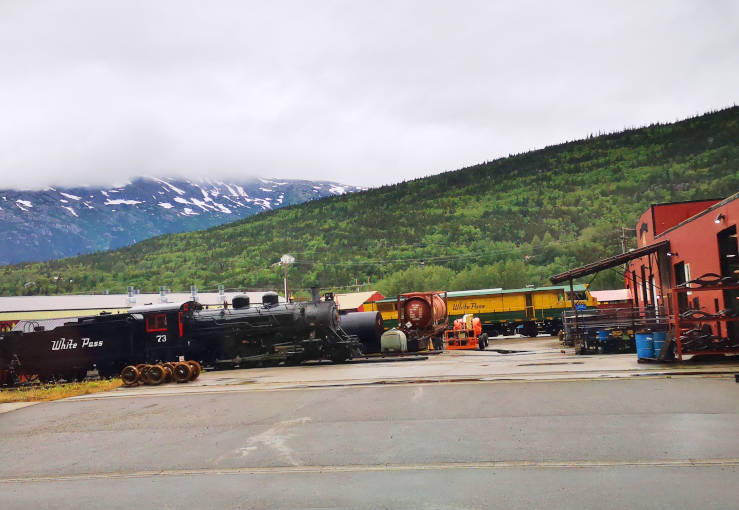
Klondike Gold Rush train maintenance buildings | Photo: Travel In Culture
In 1897, George Brackett, a construction engineer with experience from the Northern Pacific Railroad, had the first idea of a toll road from Skagway up the White Pass canyon. However, it was not until 1998 that a narrow gauge railroad saw the light of day after a project designed by Sir Thomas Tancrede and Michael J. Heney.
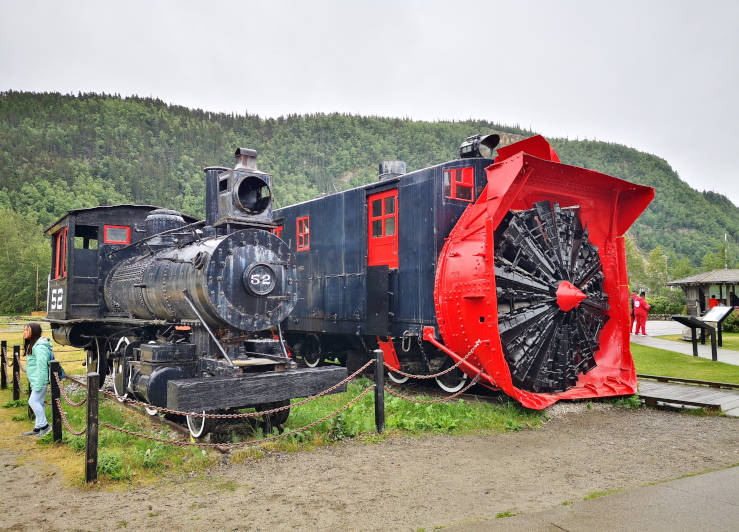
The Cooke Rotary Snowplow | Photo: Travel In Culture
The sharp curves of the White Pass required a narrow gauge railroad, which became crucial for the course of the Yukon Route Railway. The railroad workers reached the Summit of White Pass in February 1899 and Lake Bennett and Carcross half a year later.
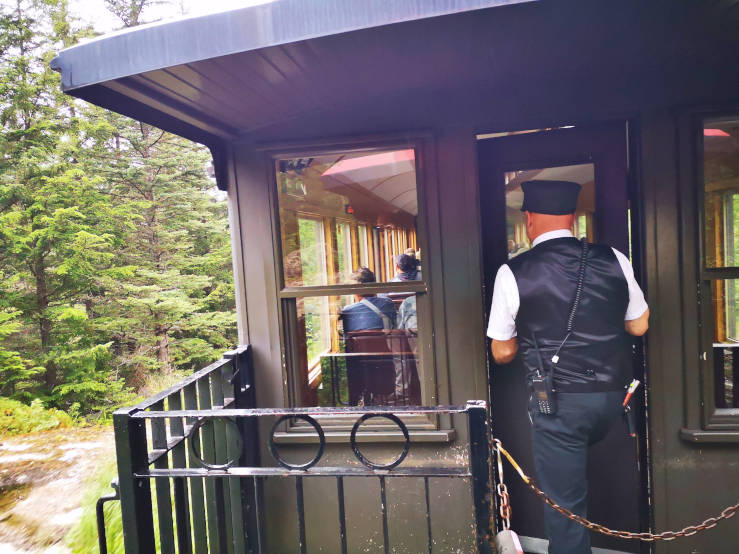
Skagway train tour – White Pass & Yukon Route Railway | Photo: Travel In Culture
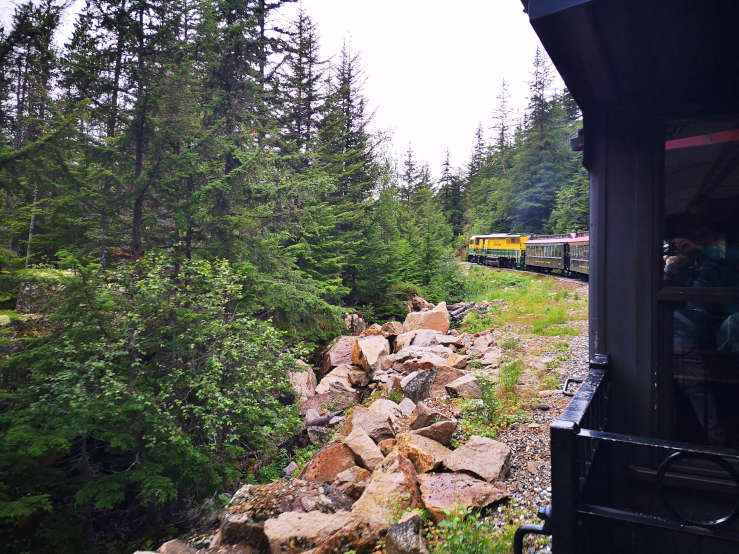
Skagway train tour – White Pass & Yukon Route Railway | Photo: Travel In Culture
Today, the Klondike Gold Rush railroad has been restored for visitor purposes. Vintage carriages take tourists past scenic waterfalls, gorges, and beautiful glaciers – along the old trails. The White Pass Train along the Yukon Route Railway is a popular tour when arriving in Skagway on a cruise. New engines, as well as restored steam engines, locomotives, and passenger train coaches, serve on the Yukon Route Railway tour up through the White Pass.
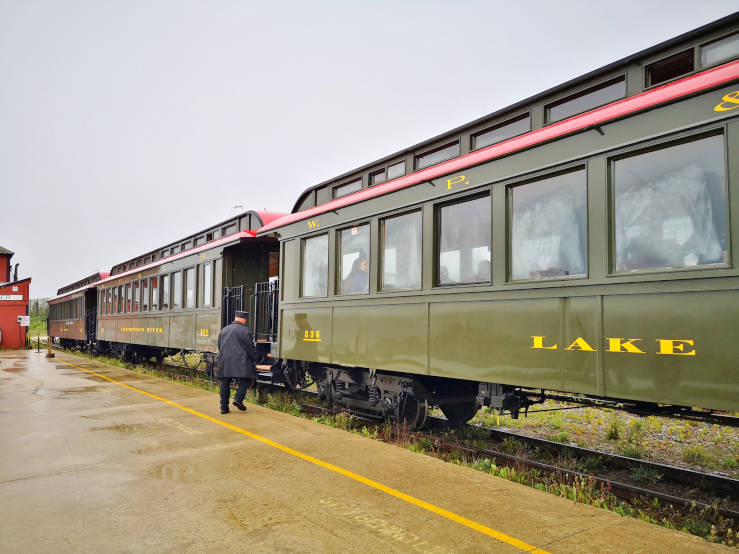
Fraser, Skagway train tour – White Pass & Yukon Route Railway | Photo: Travel In Culture
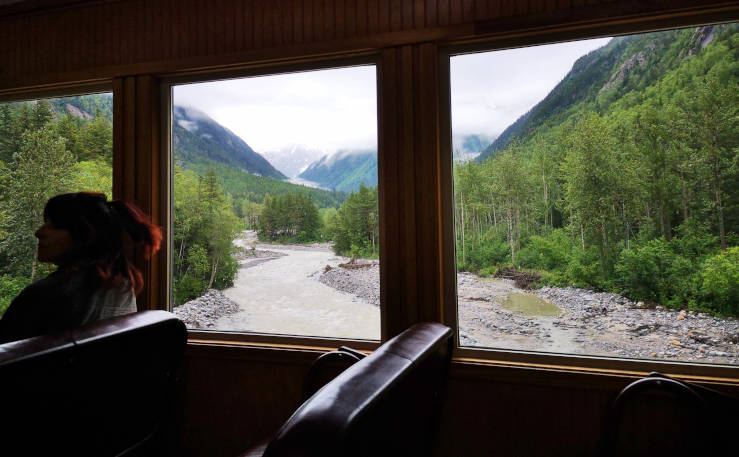
Skagway train tour – White Pass & Yukon Route Railway | Photo: Travel In Culture
The scenic ride includes gorgeous views down the gorges (e.g. Rocky Point). The Bridal Veil Falls is a spectacular waterfall at 1,334 ft. Along the way, several tiny ‘stations’ appear with the opportunity to get off and continue the itinerary on foot, perhaps to camp for a few days deep inside the gorges! Other sights include the Tunnel Mountain at Glacier Gorge, Dead Horse Gulch, where 3,000 horses were victims of overload and unreasonable demands, an old steel bridge, and a new tunnel.
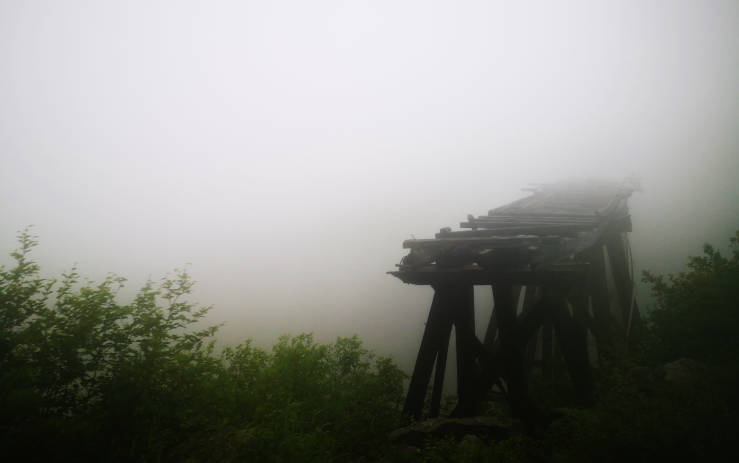
Photo: Travel In Culture
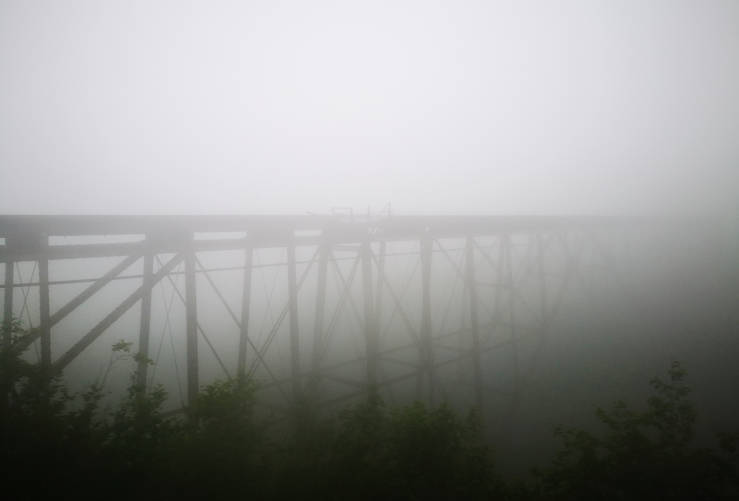
Skagway train tour – White Pass & Yukon Route Railway | Photo: Travel In Culture
The White Pass Summit is the American/Canadian border at 2,888 ft. At 28 km from Skagway, Fraser is a transfer site for motorcoach connections and Canadian Customs. 13 km further on, the old stampeders camp, Bennett, appears, where 30,000 people stayed during the winter of 1898-1899. At Bennett, they got ready with boats and rafts to cross Lake Bennett and continue down the Yukon River. Finally, Carcross is also on the historic route. It still has gold rush buildings and a steam engine on display. The last stop on the White Pass Yukon Route Railway tour from Skagway is Whitehorse, where the stampeders transferred to a steamboat.
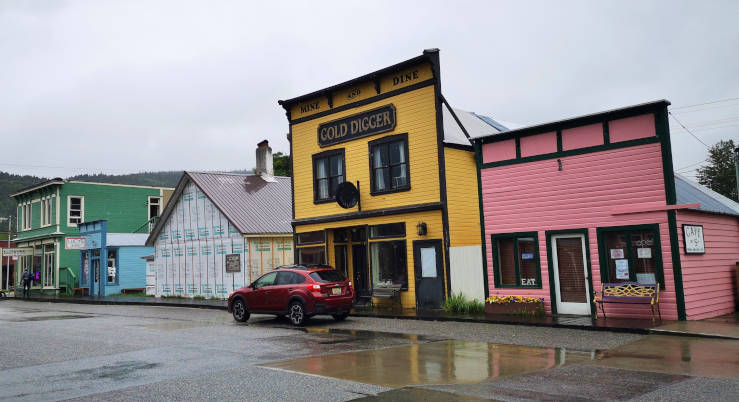
Klondike gold rush town in Skagway | Photo: Travel In Culture
However, the Klondike Gold Rush (1897-1898) ended at the end of the century as quickly as it had started, when more promising gold fields were discovered elsewhere, at Nome. Skagway’s heyday seemed to be over.
The White Pass & Yukon Route Railway was designated an International Historic Civil Engineering Landmark in 1994.
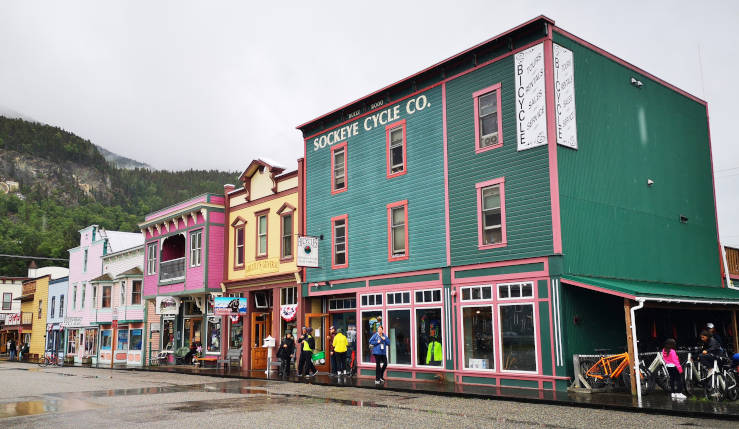
Photo: Travel In Culture
Today, Skagway is a restored gold rush town and the focal point of the Klondike gold panning history.
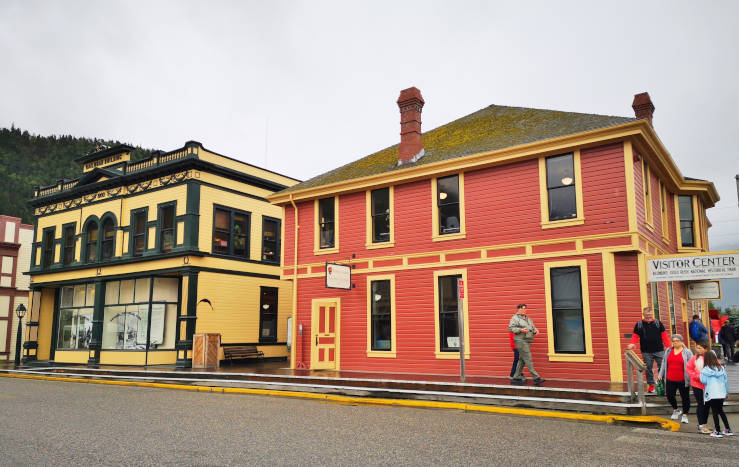
Photo: Travel In Culture
There is a visitor centre on Broadway and 2nd Avenue. In Skagway, the old gold rush history comes alive through museum exhibitions, reconstructed stores, authentic store facades and buildings, shows, and suggested itineraries.
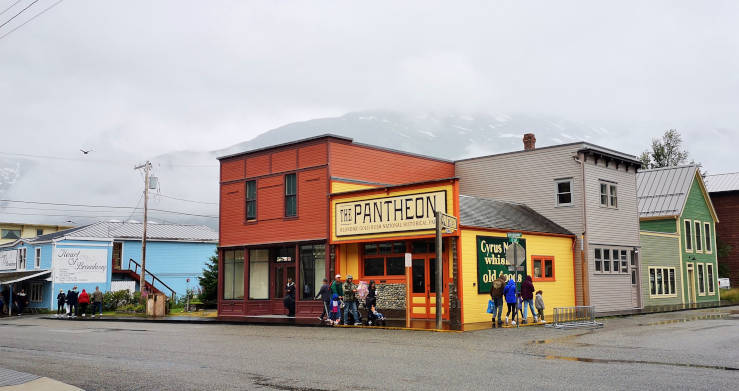
The Pantheon | Photo: Travel In Culture
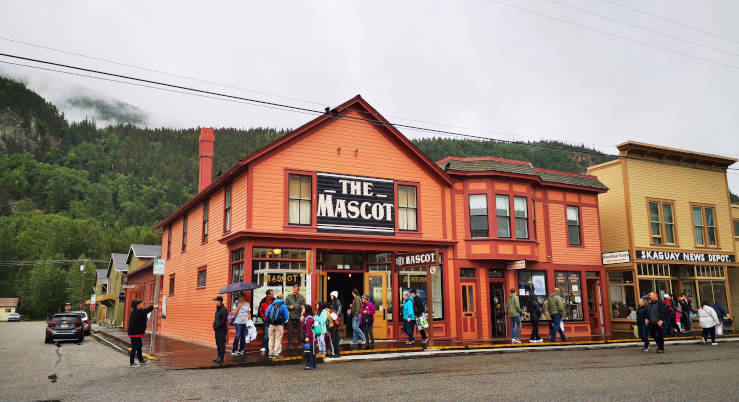
Klondike gold rush history in Skagway | Photo: Travel In Culture
The fascinating historic buildings include the White Pass & Yukon Route Broadway Depot, the AB Hall (The Arctic Brotherhood Hall) with a façade of driftwood, the Mascot Saloon, the former Pantheon Saloon, the Boss Bakery, Skagway Museum and City Hall, and the Moore House with a homestead (the Moore Cabin).
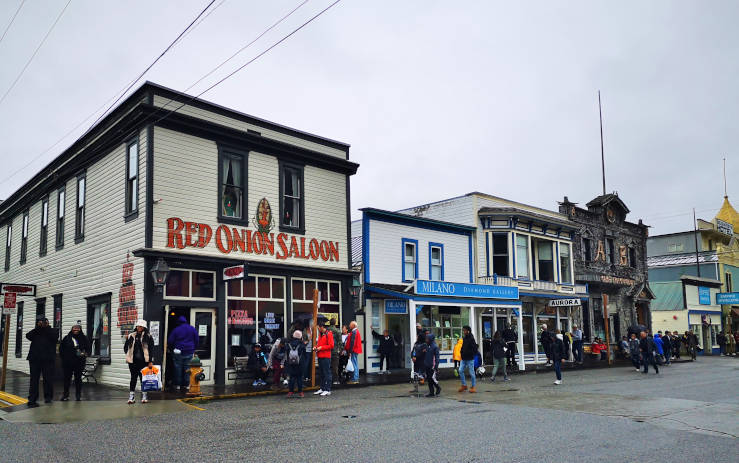
Gold rush town for Klondike stampeders | Photo: Travel In Culture
In Skagway’s heyday, The Red Onion Saloon was an attractive brothel. Today, it is still open to visitors, although now a saloon and brothel museum.
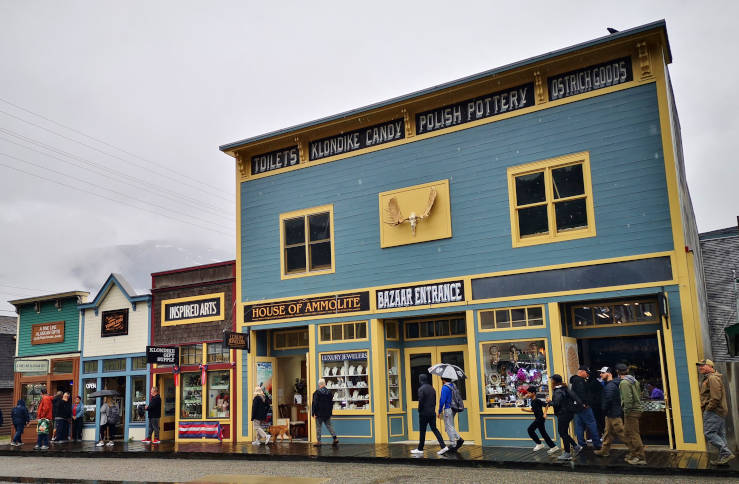
Photo: Travel In Culture
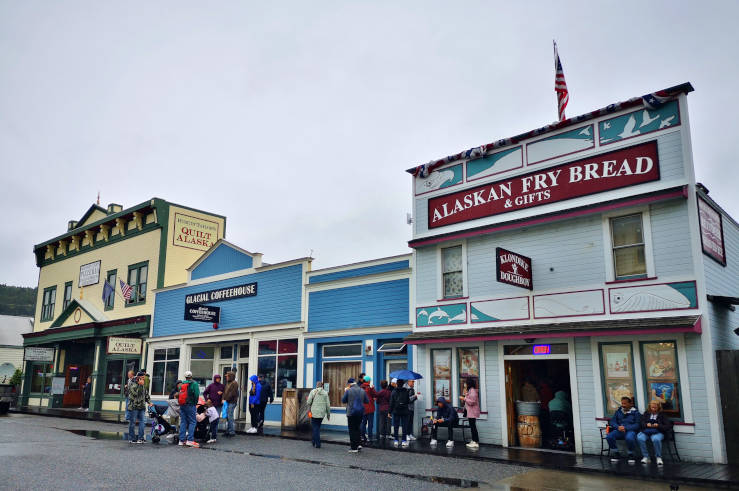
Photo: Travel In Culture
Skagway is a fabulous site to immerse yourself in old Klondike gold rush history. Today, Skagway is also attractive for hikers. Some hikers take the old Chilkoot Trail, originally used by the native Tlingit people. Visitors also enjoy going to the historic Dyea town.
For more inspiration for what to do on a day trip from Anchorage towards Seward, you may want to read Where to Stay in Anchorage & What to Do Before a Cruise
Read next: Māori Culture in New Zealand and Discover Hanga Roa in Easter Island
Skagway Train Tour: White Pass & Yukon Route Railway Tour, Klondike Gold Rush
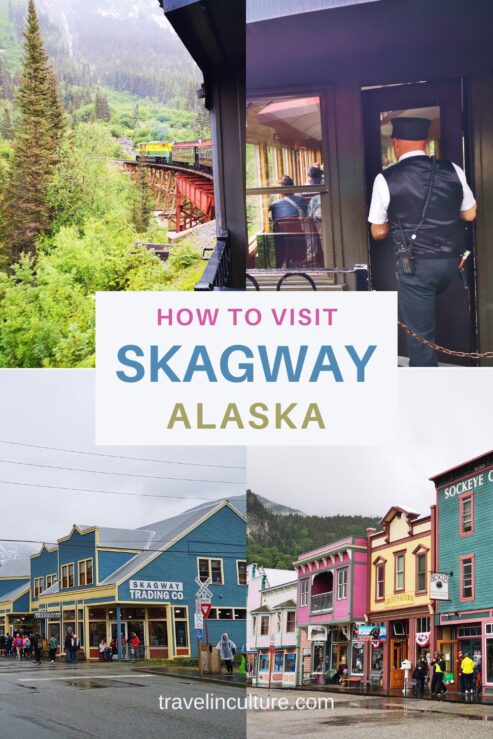
Featured image of
Skagway Train Tour: White Pass & Yukon Route Railway Tour, Klondike Gold Rush:
Travel In Culture




